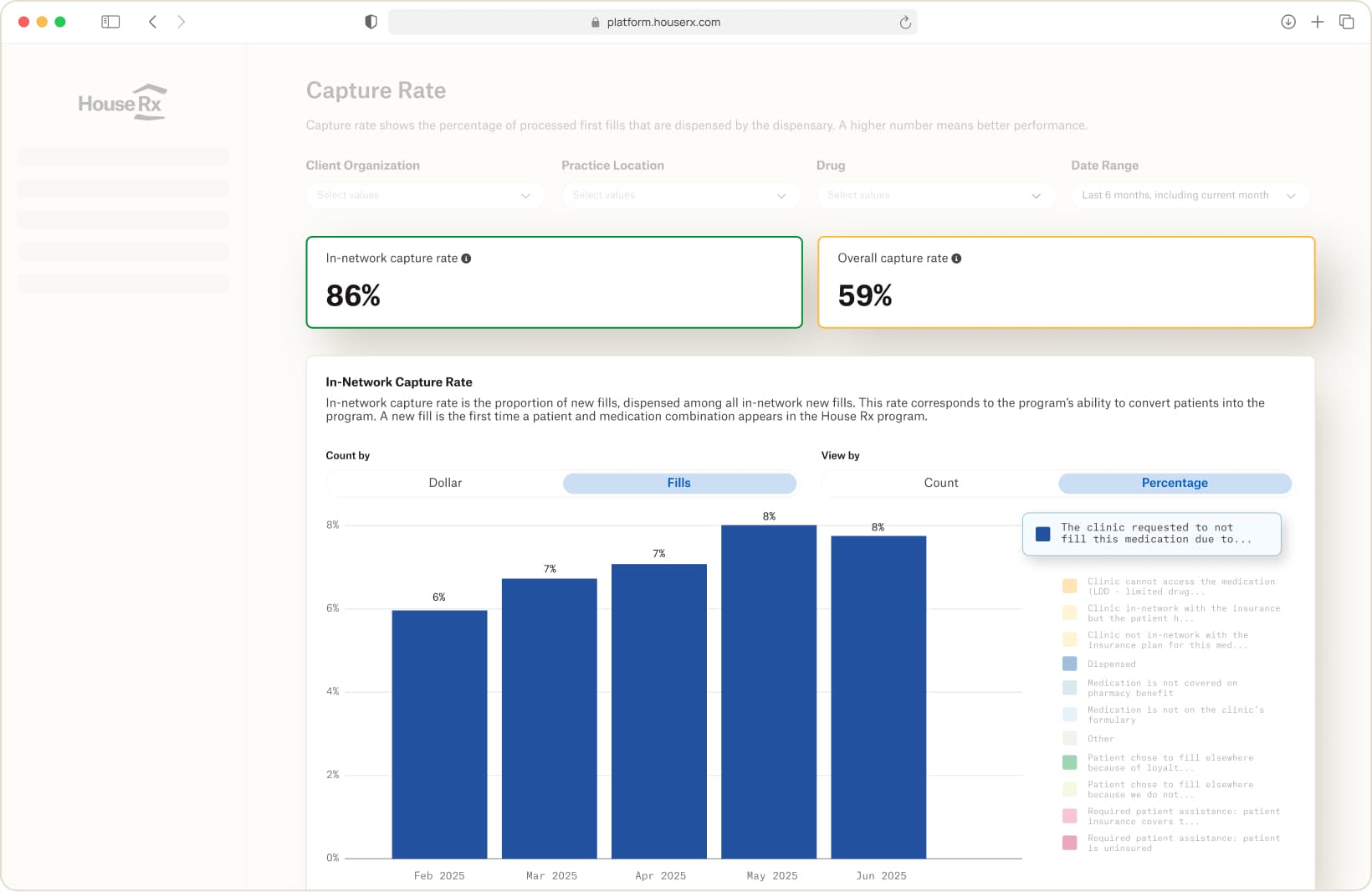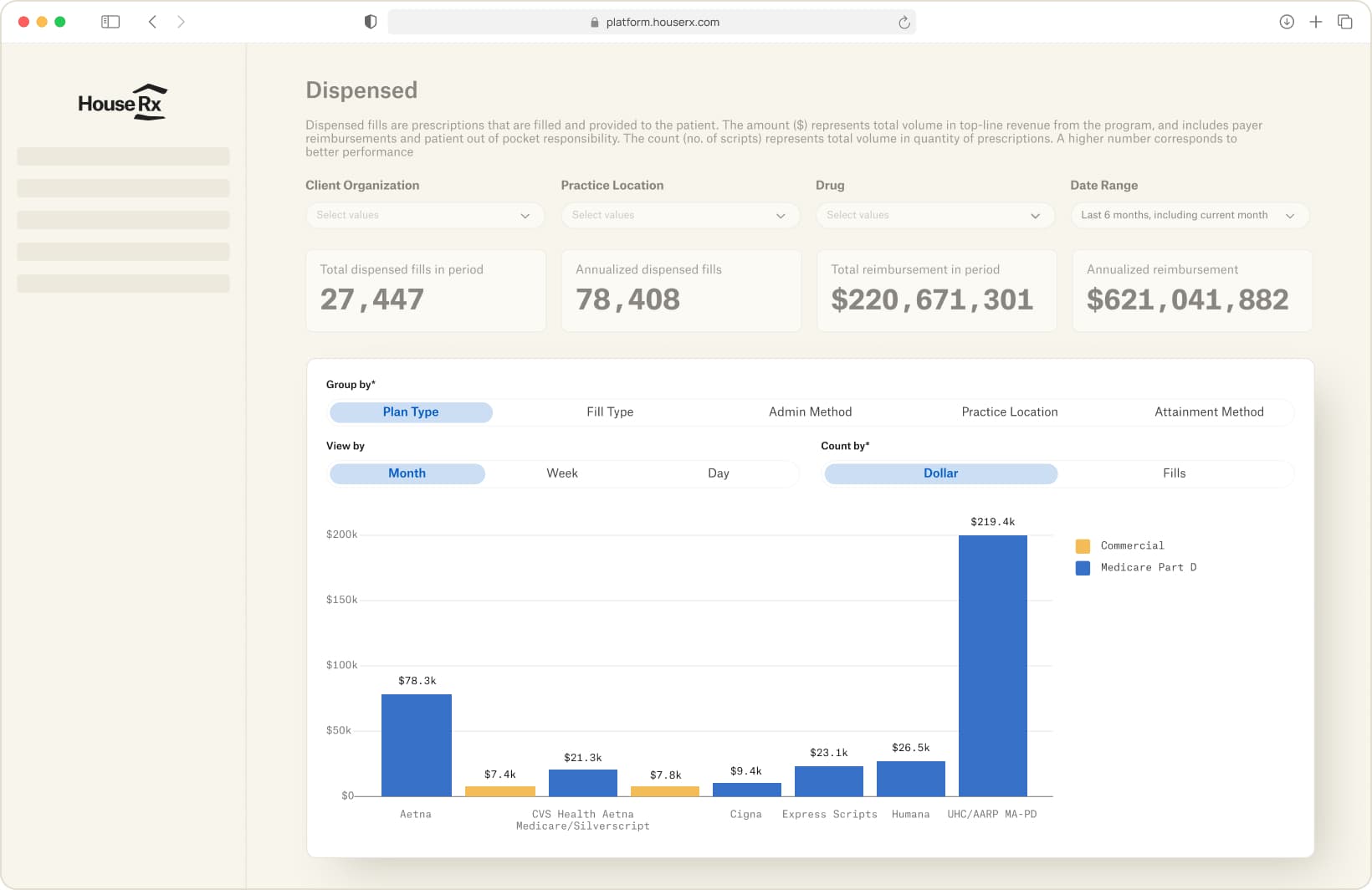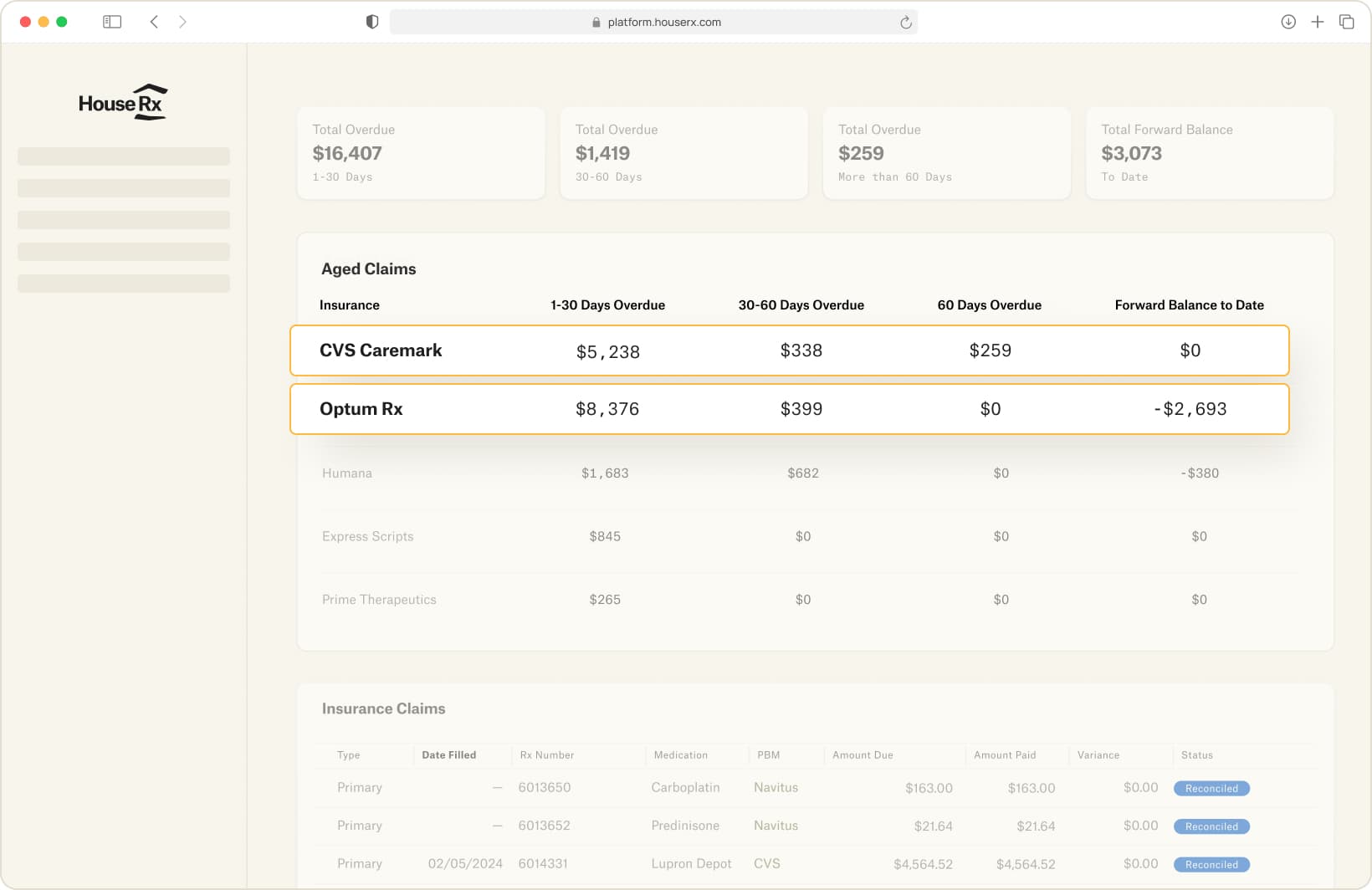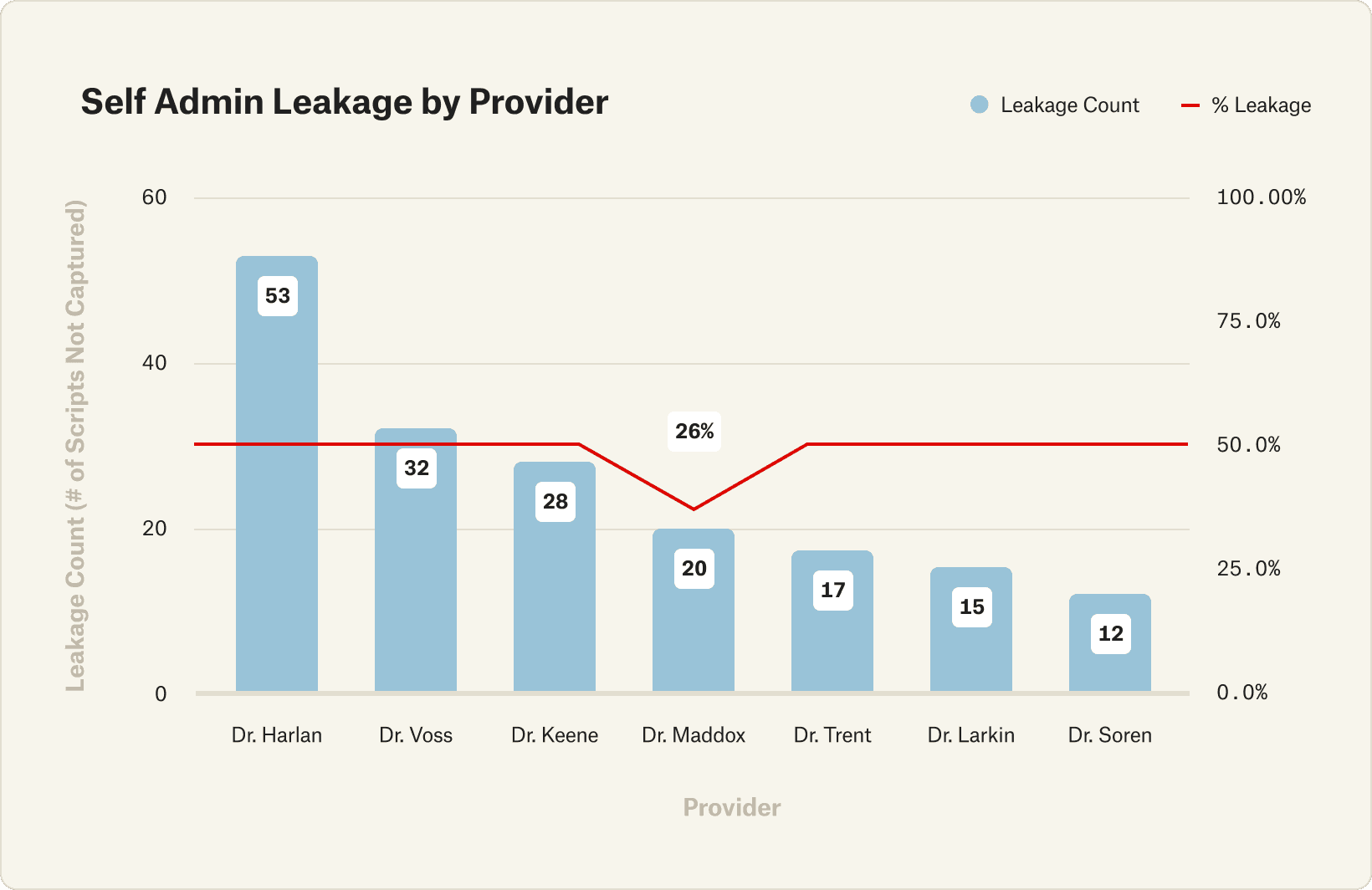When the Math Isn't Mathing
I once sat in a monthly review where the team proudly shared that it had been a strong month — prior authorizations (PAs) cleared faster than ever, providers were consistently writing prescriptions, and patients were starting therapy without delays. But when the revenue numbers hit the screen, the room went quiet. Numbers were down. When I asked why, no one had answers. It became clear that the real issue was visibility. With surface-only reporting and no single source of truth, even the best-run programs can feel like they’re flying blind.
If this sounds like your story as a pharmacy leader, clinic administrator, or care provider, you’re not alone – and I’ve lived it too. From starting as a pharmacy cashier at 16, working my way through pharmacy school, and eventually managing hospital and independent pharmacies, to now helping clinics nationwide implement and optimize medically integrated dispensing programs at House Rx - I’ve seen the same pattern repeat. The math often doesn’t “math,” and it usually comes down to five core reasons.
Here’s what to watch for and how you can fix it.
1. Dispenses Aren’t Aligned With Prescription Volume
You’re seeing plenty of prescriptions written in the EHR, but dispense counts don’t reflect it.
Why this happens:
Prescriptions are routed externally, stall in PA limbo, or are dropped when next steps aren’t clear. Without a closed-loop workflow, visibility breaks down.
Example:
A provider writes 20 new oral oncolytic prescriptions in a week. Only 8 dispenses are logged at your in-house pharmacy, so where are the rest? Likely to payer-mandated mail-order, but were other controllable losses caused by missed outreach or workflow gaps?
How to fix it:
Implement technology that drives data-to-workflow reconciliation, starting at Rx written, following through PA status, benefits verification, and ending in claim adjudication. Categorize reasons with structured data into controllable (e.g., patient unreachable) and non-controllable (e.g., out of network). If your existing PMS system isn’t capable of this level of detail, start small: log each unfilled script in a simple spreadsheet until you can automate the process.

2. Patients Fall Through the Crack Between Authorization and Fill
You’ve got approved PAs, but no fills. Where did the patient go?
Why this happens:
Approval isn’t action. When patients wait days for a call, face unaffordable copays, or are confused about next steps, therapy can be quietly abandoned.
Example:
A PA is approved on Monday, but the patient isn’t called until Friday. By then, they’ve gone elsewhere or given up altogether.
How to fix it:
Track PA approval-to-fill time and set a service-level standard for follow-up within 24 - 48 hours. Seeing a time lag of more than 2 days? That’s a handoff problem. Measure patient adherence. A dip there signals a follow-up problem. Use this data to drive timely interventions like reminder calls, benefits explanation, or tighter navigator-pharmacy loops. Direct oversight of the team is important, so align closely with supervisor goals and focus. If your budget doesn’t support this, consider a vendor (cough, cough!)

3. Fills Are Happening, Just Not Where You Think
Your data shows growth, but your revenue tells a different story.
Why this happens:
Seasonality, AWP changes, cycle days, patient scheduling, oh my! Not every change in your data reflects your practice performance. External factors like payer mandates, white bagging, or shifts in prescriber behavior can divert fills elsewhere, causing your numbers to rise or fall without any change in how your team is operating. Without real mid-month projections in hand, it can be tough to separate random fluctuations from actionable trends and make proactive adjustments before the month ends.
Example:
Your EHR shows a surge in volume for a particular high-cost drug, but the revenue isn’t following. Several weeks later, around the end of the quarter, you learn that a payer quietly changed its preferred specialty pharmacy, so fills were diverted elsewhere. Because this change wasn’t noticed until the end of the quarter, the clinic missed a chance to respond quickly
How to fix it:
Integrate payer-level and dispensing source data into your reporting to detect diversion early. Create heatmaps or trend views segmented by drug class, payer, and dispensing pharmacy to pinpoint trends. If you notice consistent losses tied to one payer, involve your credentialing or contracting team to address the issue before the next billing cycle.

4. Reported Revenue Looks Strong, But the Bank Account Disagrees
Your reports show volume growth and revenue increase, but the cash flow is lagging.
Why this happens:
Your reconciliation process may not account for the types of fills that are driving revenue. More retail fills? Underwater payer contracts? Lower-margin maintenance meds? Total revenue on paper doesn’t always translate to real margin or cash in the bank. Without categorizing fills and adjusting for payer mix and reimbursement trends, your financial picture is incomplete.
Example:
This month’s report shows record-high revenue. However, a closer look shows that 60% of fills were low-margin retail scripts or were billed under payer contracts that reimburse below the acquisition cost. So yes, your revenue grew, but your profit shrank.
How to fix it:
Break down reported revenue by drug type, payer, and reimbursement tier to understand which fills drive profit and which erode it. Flag contracts that consistently pay below cost and categorize fills by margin impact. Align your reports to reflect actual profitability, not just volume, so finance isn’t left reconciling surprises at the end of the month. Then use these insights to guide formulary focus, payer engagement, and inventory strategy.

5. Your Graphs Measure Motion Instead of Momentum
Metrics only reflect what happened, and not what could have happened, hiding your biggest opportunities for growth
Why this happens:
Most dashboards track completed tasks (fills, calls, PAs) but ignore leakage. Without measuring missed opportunities, performance metrics become a record of the past rather than a driver of the future. When teams can’t see the gaps, they stop looking for them.
Example:
Your monthly dashboard shows 75 dispenses - up from 60 last month. Sounds great, right? However, when you dig deeper, you find that the clinic wrote 120 eligible prescriptions, and of those, only 90 went to your pharmacy, and 15 were never filled at all. The celebrated growth can mask a missed opportunity.
How to fix it:
Measure against total opportunity, not just completed tasks. Build a leakage report that compares Rx written → Rx referred → Rx filled → Rx reimbursed.
Then, create a workflow to review every drop-off:
- Why wasn’t it filled?
- Was it a payer block?
- Did we miss a patient follow-up?
- Did a provider send it to an external pharmacy?
Once you’ve tagged the source of leakage, use those examples for coaching, not blame, and to help close the loop. This turns missed opportunities into momentum and future growth.

Final Thought: Data Should Drive Workflow — Not the Other Way Around
Some of you may not have the data needed to “do the math” due to antiquated systems. Others have it, but don’t trust it. Either way, every discrepancy is a clue that something went untracked, unnoticed, or unresolved. The most successful medically integrated programs are data-informed, workflow-aligned, and relentlessly focused on patient movement.
When you fix the root cause, the math starts to make sense.
Ready to Make the Math Math Again?
If any of these five challenges sound familiar, you’re not alone — and you don’t have to solve them on your own.
At House Rx, we help clinics build high-performing, data-driven specialty pharmacy programs that:
- Close workflow gaps
- Improve access and adherence
- Drive sustainable financial growth
- Specialty pharmacy expertise and management
✅ Want to see how your metrics stack up to best-in-class?
✅ Curious where leakage is costing you revenue or patient starts?
✅ Need a partner who understands both clinical workflows and payer realities?
Let’s talk. We’ll help you uncover the gaps, close them, and make them work in your favor.